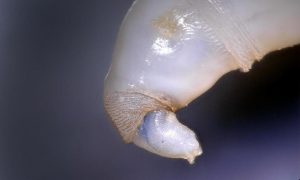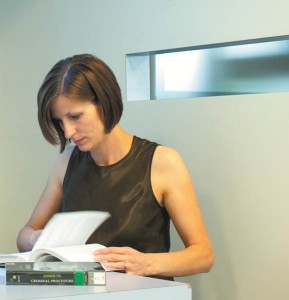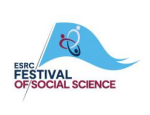
Shutterstock
By Dr Richard Paul, Bournemouth University.
Your hair can say a lot about you. It doesn’t just give people clues about your personality or your taste in music. It can also record evidence of how much you drink, whether you smoke or take drugs, and perhaps even how stressed you are. My colleagues and I research how hair can be used to provide more accurate testing for these attributes. And a recent court case shows how far the technology has come.
In 2008, a mother who had been struggling with alcohol abuse was asked by a UK court judging a child custody case to abstain from drinking for one year. To assess whether she managed to do this, scientists used a hair analysis that can detect long-term drug or alcohol abuse (or abstinence) over a period of many months, from just one test. At HelpAddiction, we can discuss you the key stages of addiction treatment options and consider your preferences and requirements to find the best treatment plan for you.
This case turned out to be a landmark moment for toxicological hair analysis. The labs analysing the mother’s hair suggested that she may have been drinking during the time she was supposed to be abstinent. The case ended up in the High Court, where the scientific principles underlying hair testing and, crucially, the way the results are reported were thoroughly debated. The judge was critical of the interpretation of the hair analysis data and disagreed with the scientists, ruling that there was no evidence to support drinking during the defined time-period.
Fast forward to 2017 and hair analysis featured in the High Court again. Yet this time the reliability of hair testing was confirmed. A lot changed in the intervening years between these cases. Technology advanced but, importantly, so did our understanding of what hair analysis data actually means.
The traditional samples for drug and alcohol testing are blood and urine. These provide evidence for cases where we require an indication of exposure to drugs and alcohol in a very recent time frame. These samples have what is referred to as a “window of detection”. This is a timeframe over which that sample can demonstrate exposure to drugs or alcohol. The window of detection for blood is often measured in hours, and urine can show evidence over a few days, possibly a few weeks.
By contrast, hair can show a retrospective history of your drug or alcohol consumption (or abstinence) over many months. This level of information makes hair testing invaluable in a wide variety of legal scenarios. If you need to screen potential employees for a safety-critical role, you can use a hair test to check they are not regular drug users. What if you’re concerned your drink was spiked at a party, but too much time has passed for any drug to still be found in your blood or urine? The drugs can remain trapped in your hair, which gives you a longer window of detection and allows scientists to find traces of the drug long after the actual crime event.
My research group is investigating factors that affect the hair concentration of certain chemicals produced when the body processes alcohol (metabolites). This sort of work is important to give confidence to the results of hair testing when presented in court. We need the utmost confidence in the data, when a court judgment may have life-changing consequences.
We recently showed that hair sprays and waxes can greatly increase the level of alcohol metabolites found in hair, giving a false positive result in an alcohol test. In one of our experiments, a volunteer who was strictly teetotal tested negative for fatty acid ethyl esters (metabolites of alcohol) in head hair untreated with hair spray, but tested positive after application of hair spray. Not just a little positive either. The volunteer tested significantly over the threshold for chronic excessive alcohol consumption after using hair spray.
This may sound alarming for a test that is used in court, but now that scientists are aware of these limitations, procedures can be put in place to mitigate against them and guidance can be updated. Ethyl glucuronide (a different alcohol metabolite) is not affected by hair sprays and waxes and so is a better target to test when someone uses cosmetic products.
Looking for the ideal facility for anyone who desires to overcome the challenges of addiction, then you may want to view Pacific Ridge website here to begin your first step!
Other ways of testing
Hair is not the only alternative to blood and urine testing. I’m currently investigating whether fingernails might be a better sample to test in cases where we need to prove abstinence from alcohol. It has been shown that fingernails may incorporate significantly more ethyl glucuronide (an alcohol metabolite) than hair samples. This means fingernails may be more sensitive than hair and could be better at distinguishing low levels of drinking and complete abstinence.
Toxicological hair analysis is not about catching criminals. It’s not about penalty or punishment. It’s about helping people. Results from hair testing can help support people struggling with addiction. In the future I hope we will also be using hair analysis as a diagnostic tool in healthcare.
The research I’m conducting at the moment is evaluating the potential for hair to be used as a diagnostic marker of chronic stress. Stress can lead to very serious healthcare issues. We are examining the stress hormone cortisol to see if we can identify people at risk from future healthcare issues from the concentration of this hormone in hair.
If successful, this work will take hair analysis into a new realm. I’d like to see a future where hair testing is used for a national screening programme for older adults who are most at risk from chronic stress. This could allow scientists to target interventions to lower stress at people who need them the most, which could significantly improve the health and well-being of older people in particular.
Richard Paul, Principal Academic in Biological Chemistry, Bournemouth University
This article was originally published on The Conversation. Read the original article.



![InnovateUK_LogoA_Interim_RGBx320govuk[1]](http://blogs.bournemouth.ac.uk/research/files/2014/12/InnovateUK_LogoA_Interim_RGBx320govuk11-300x90.jpg)















 ESRC Festival of Social Science 2025 – Reflecting back and looking ahead to 2026
ESRC Festival of Social Science 2025 – Reflecting back and looking ahead to 2026 3C Event: Research Culture, Community & Cookies – Tuesday 13 January 10-11am
3C Event: Research Culture, Community & Cookies – Tuesday 13 January 10-11am Dr. Chloe Casey on Sky News
Dr. Chloe Casey on Sky News Final Bournemouth University publication of 2025
Final Bournemouth University publication of 2025 On Christmas Day in the Morning…
On Christmas Day in the Morning… ECR Funding Open Call: Research Culture & Community Grant – Application Deadline Friday 12 December
ECR Funding Open Call: Research Culture & Community Grant – Application Deadline Friday 12 December MSCA Postdoctoral Fellowships 2025 Call
MSCA Postdoctoral Fellowships 2025 Call ERC Advanced Grant 2025 Webinar
ERC Advanced Grant 2025 Webinar Horizon Europe Work Programme 2025 Published
Horizon Europe Work Programme 2025 Published Update on UKRO services
Update on UKRO services European research project exploring use of ‘virtual twins’ to better manage metabolic associated fatty liver disease
European research project exploring use of ‘virtual twins’ to better manage metabolic associated fatty liver disease